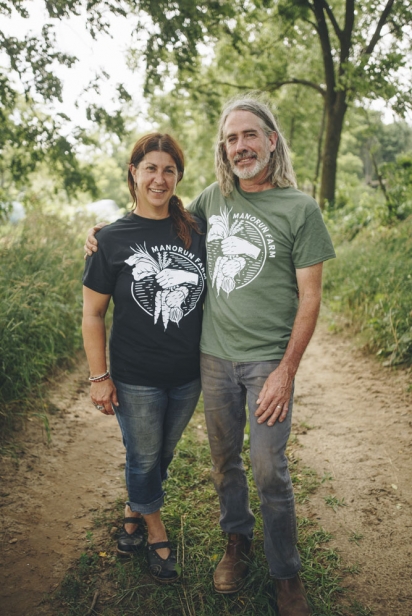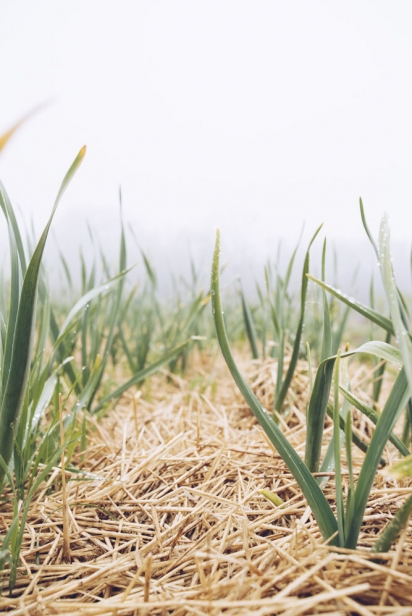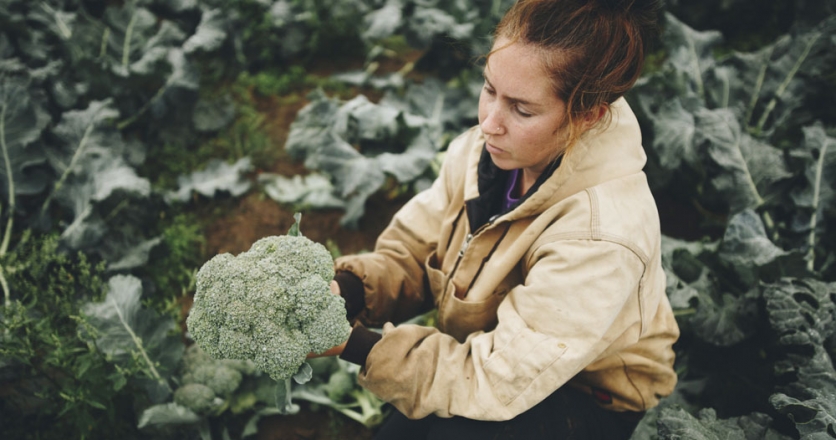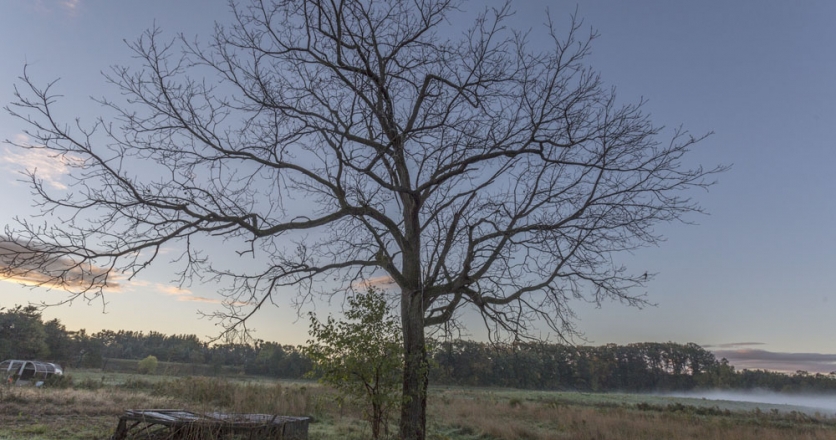Ode to the Oak Savanna
Chris Krucker's first order of business when he bought a 20-acre swath of land behind his Lynden farm eight years ago was to chop down the skyscraper of a black walnut tree that came with the ground.
The native nut tree with a reputation for stymying anything growing near it would be out of place on a parcel where Krucker planned to produce vegetables for Manorun Organic Farm and CSA, which he owns and operates with his wife, Denise Trigatti.
"Then I realized the worst thing you can do is cut down black walnut," Krucker recalls. "Fruit trees love it. Fruit trees go out of their way to get under black walnut. Raspberries do OK under them. Onions do well under black walnut."
Krucker didn't just leave that old tree in its place. He planted a few more black walnut alongside it. Next, he added 1,000 indigenous species, including oak, maple, birch, mulberry and apples, 300 hazelnut trees, 200 chestnuts and spruce and pines.
Wasn't this going to be a vegetable farm, though? It was — and still is — but it's one that subscribes to a model of food production that bucks most modern farming conventions.
In fact, on an early winter day, with downy snow draped over the countryside outside Hamilton, Krucker and Trigatti's tract doesn't even look like a cultivated field. It has a fallow air next to those treeless expanses that make up most of the farmland here. Threads of immature trees and bushes, their branches more scrubby than lush at this time of year, break up the couple's acreage every 100 feet.
Krucker calls it restoration agriculture. What he's bringing back with every tree planted, each crop he and Trigatti cultivate and the animals they raise here is the oak savanna. It's a multi-layered food production and eco-system that dominated the landscape before Europeans arrived with a slash-and-burn approach to establishing farmland as we know it today.
Farming within an oak savanna wasn't what Krucker had in mind in 2012 when he purchased the field to expand the small- scale, diverse organic vegetable farm he and Trigatti had run for more than a decade at that point.
When managed properly, though, the oak savanna — human- made or natural — offers a mix of arable land and naturalization areas that produce cultivated crops, perennial fruit and nut harvests under a canopy of soft and hardwood trees. Water resources are strategically managed with swales, and grazing by both domestic and wild animals is encouraged.
A symbiotic relationship establishes itself between everything living and growing within an oak savannah. Ultimately, it's getting the land and its inhabitants to share in the work of producing food.
"It's putting your production into the eco-system," Krucker explains. "This is really permaculture. I'm hoping what we're doing is returning the biology of the field."
Krucker's goal has always been to make his land as productive as it can be without compromising his values as an organic farmer. He just wasn't sure of the finer points of his plan when he bought the field all those years ago. Then a confluence of events made it all click.
Krucker read 1491: New Revelations of the Americas Before Columbus by Charles Mann, about the pre-contact existence of sophisticated agricultural systems, including the oak savanna, which can be managed by humans without beating nature into submission.
He followed that with Restoration Agriculture: Real World Permaculture for Farmers by Mark Shepard. The book resonated so much that when Shepard spoke at the 2014 Guelph Organic Conference, Krucker absorbed the sustainable agriculture advocate's every word, then extended an invitation to him to have lunch back at Manorun.
Shepard, who regularly speaks on the topic, touts the restoration of the oak savanna as a farming method that will feed the world. After a few hours together at Manorun, Krucker had a vision for how to contribute to that.
"When we bought the 20 acres here, I'd been wanting to do something with permaculture. We could start new with this," Krucker recalls.
That spring, he planted all those trees and dug the swales to move water across his field. He had the beginnings of an oak savanna that will take decades to mature, but is shaping up to be an eco-system that nourishes everyone and everything.
Each spring since, those swales, buffered by small shrubs and vines, teem with pollinators. They take carbon out of the air, add nutrients to the soil, and provide food for people and animals. The biodiverse areas on the periphery of Krucker's field are also home to pollinators, wildlife and predatory insects.
Krucker is incorporating livestock, including pigs, into his farm plan to control pests, eat fallen crops from fruit and nut trees, and then fertilize the soil. He'll rotate pasture land with his vegetable gardens to ensure no area gets depleted and disease doesn't run amok.
"They're doing a lot of the work we don't have to do," Krucker says about the components of the oak savanna. "The idea behind this is that on a 20-acre piece of land, we're building fertility and diversity of crops.
"We're seeing fewer and fewer pests. We're seeing nature come back," he added. "We have a hawk now, an owl. We have to protect our livestock a little more."
One thing the family doesn't have to protect is Manorun with off-farm jobs. Farming within an oak savannah provides the couple and three of their four children with a livable income.
It's a novel concept on just 25 acres of arable land, including the five acres the family owned previously. Most modern-day agriculture is rooted in growing food on a large scale and making little money, then incurring debt to expand and grow more of the same crop for low return.
"Most cash croppers have full-time jobs. The systems that are sustainable are on a quota system," Krucker explains. "Now we're paying out our children. Forty per cent of what we gross goes to our children's income; another 20 to 30 per cent of that is our income, and then we have the expenses of the farm. In some ways, I'd say we're more viable than other agriculture sectors."
And not just when it comes to the bottom line, he noted.
"Restoration agriculture and the oak-savanna idea predate Europeans. In my mind, it was a more advanced way to farm," Krucker says. "You kind of tumble into these things and I think the environmental piece of this has grown [in importance] over time as I learn more about it. And why wouldn't you want things to be healthier and more natural for the environment?"
Manorun Organic Farm
782 Hamilton Regional Rd 52, Lynden, Ont.
manorun.com | 905.648.9608 | @manorunorganicfarm









